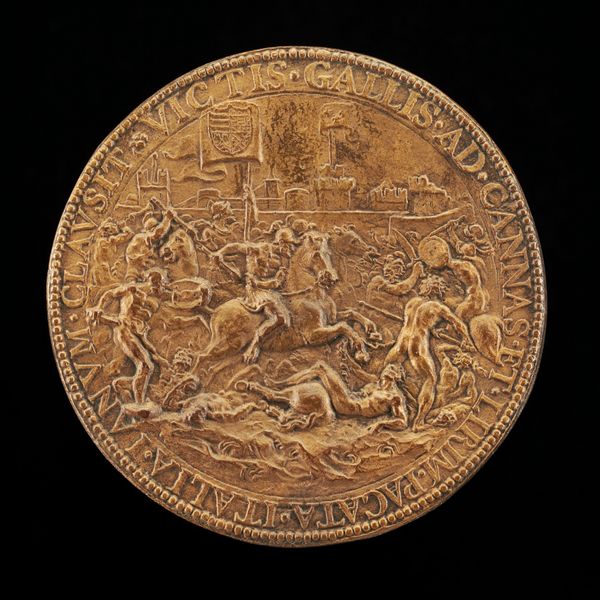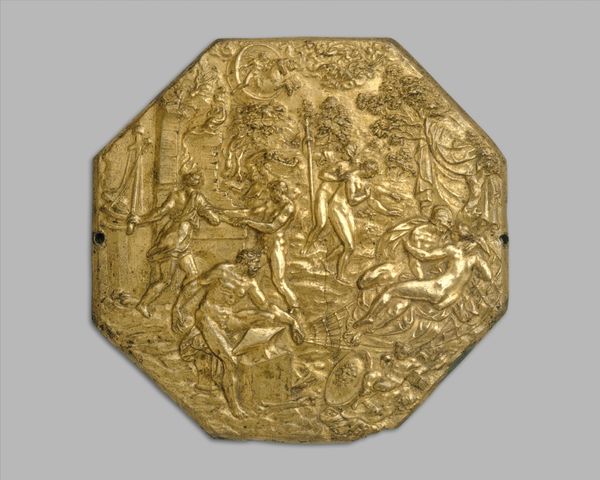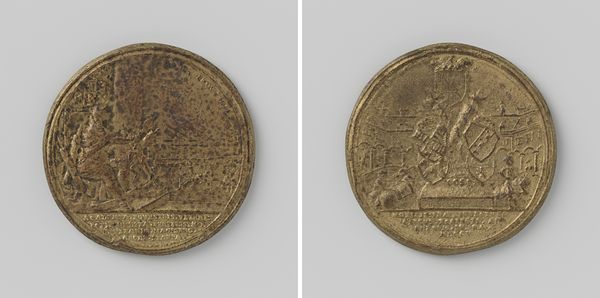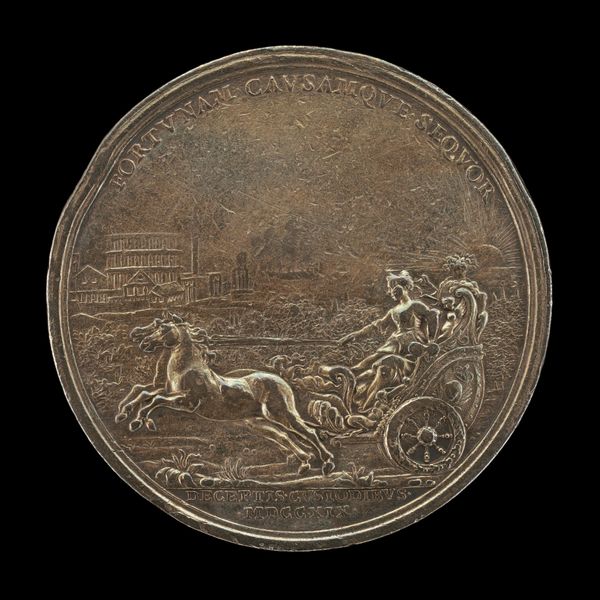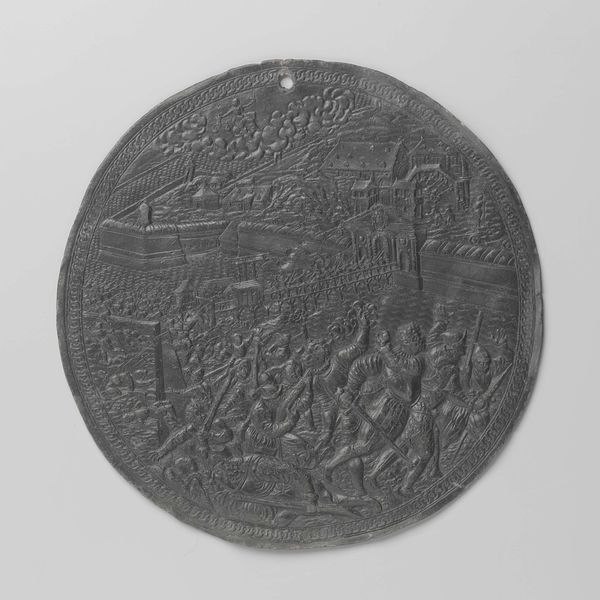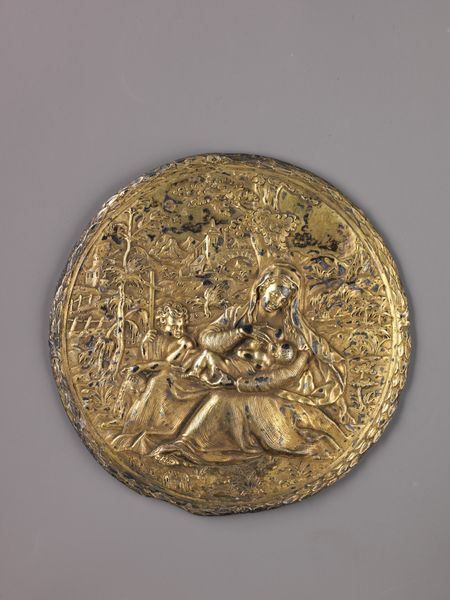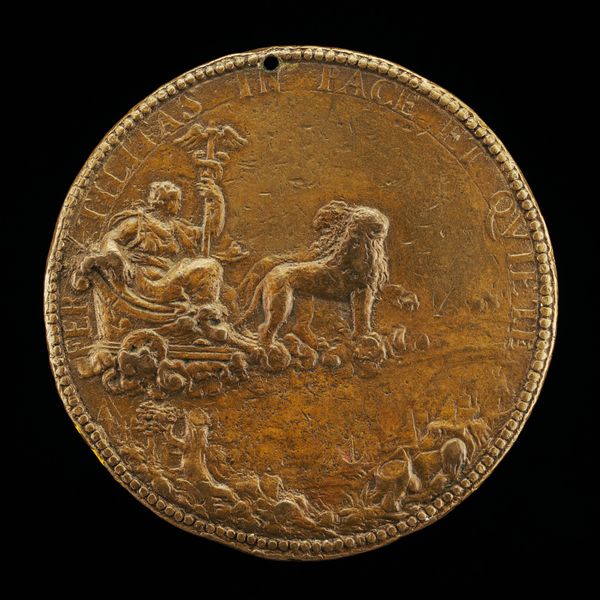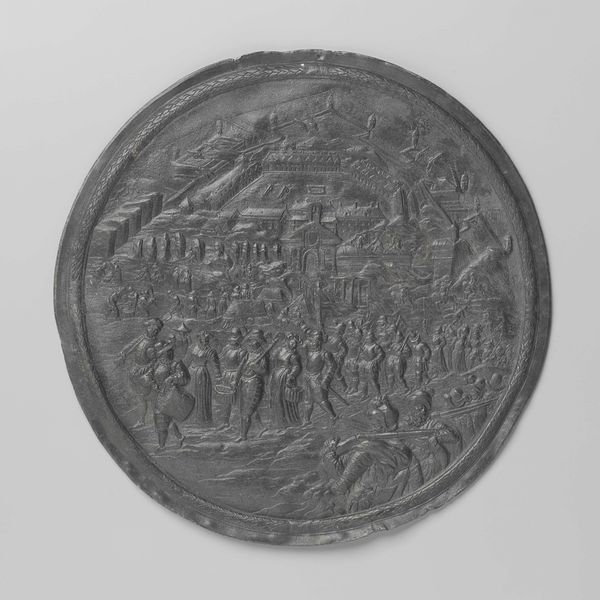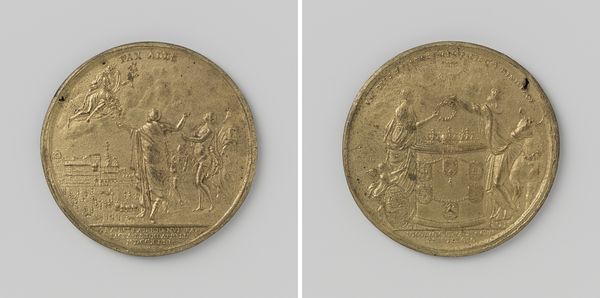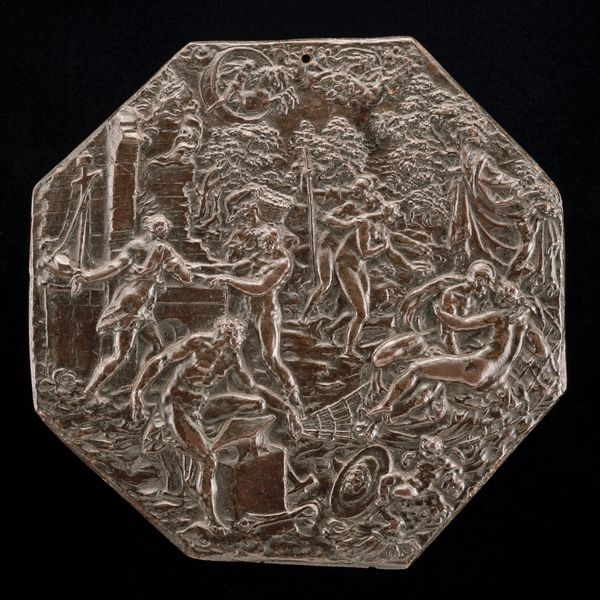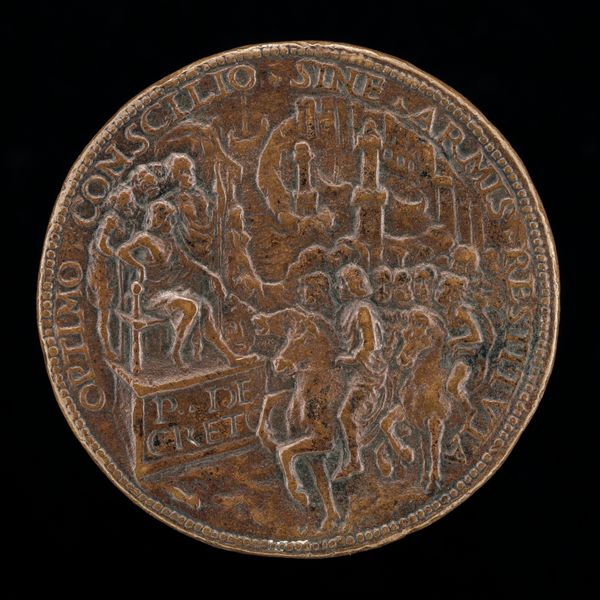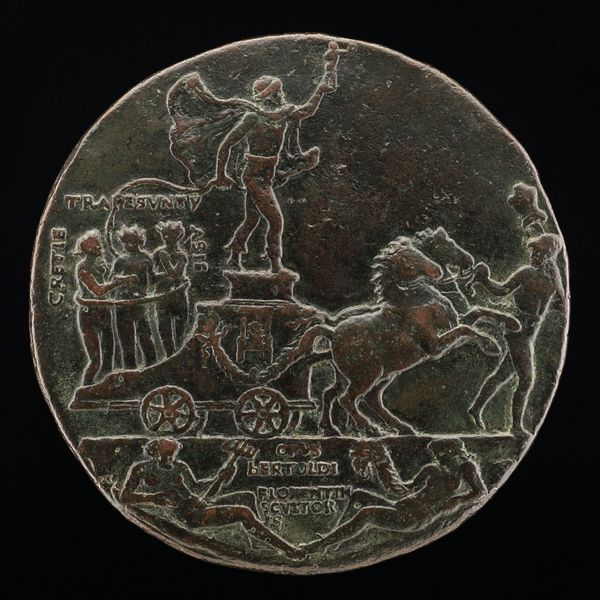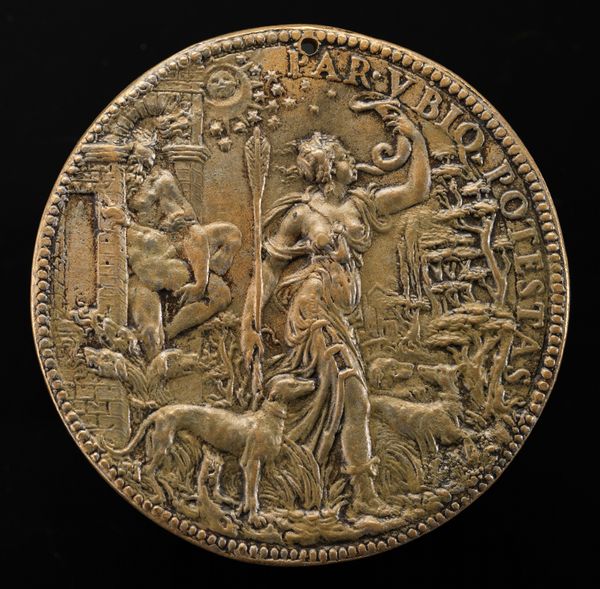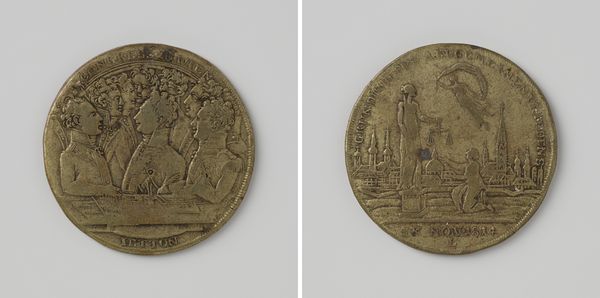
Self-sacrifice of Marcus Curtius 1593 - 1603
0:00
0:00
metal, bronze, sculpture
#
metal
#
sculpture
#
bronze
#
sculpture
#
horse
#
men
#
history-painting
#
italian-renaissance
Dimensions: 16.6 x 17.2 cm, wt. 361.26 g.
Copyright: Public Domain
Editor: Here we have Paulus Willemsz. van Vianen's bronze sculpture, "Self-Sacrifice of Marcus Curtius," dating back to the late 16th or early 17th century. It’s this dynamic scene rendered in metal, but I’m unsure about what I’m looking at in its details. How do you interpret this work? Curator: The scene depicts Marcus Curtius, a Roman hero, plunging into a chasm to save Rome. It’s a powerful statement about civic duty, sacrifice, and the idealization of masculine heroism, very prevalent during the Renaissance. The work needs to be seen in the context of its revival of classical ideals during a period of immense social and political transformation. Consider the act of self-sacrifice here; for whom is this sacrifice being made and what are the ideological underpinnings for valorizing such actions? Editor: Sacrifice for the common good? Is that too simple? Curator: Not at all. But what constitutes the "common good," and who defines it? This piece emerged during a period marked by elite power structures and deeply entrenched social inequalities. The artist highlights one man's power, but think about how the sculpture's very existence likely depended on a vast network of labour that excluded all but a few men. Editor: So it presents an idea, maybe even a skewed one? Curator: Precisely! It reinforces particular notions of sacrifice, power, and heroism, possibly obscuring the lived experiences and struggles of other, less visible groups. It begs the question, who are the forgotten figures within this narrative? It demands questioning what Renaissance heroism actually means beyond its glorifying imagery. Editor: That gives me a totally new perspective. It’s not just a historical scene, it's also a lens for critically examining cultural values and power dynamics. Curator: Exactly. Examining its complex relationship with socio-political history will change your experience.
Comments
No comments
Be the first to comment and join the conversation on the ultimate creative platform.
